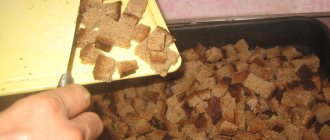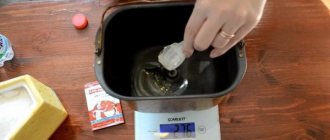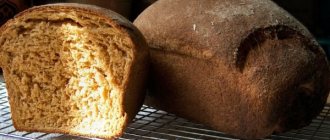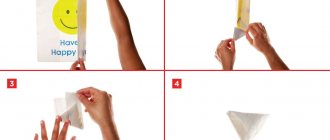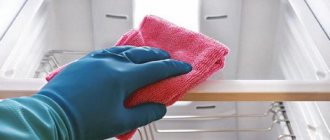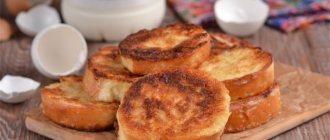If shelves or cabinets intended for storing baked goods are not properly maintained, unwanted microflora settles on their surfaces. Most often, during inspections, potato blight, mold, chalk disease, etc. are found there. The first poses the greatest danger to humans, however, any of the named pathogens equally makes bread unfit for consumption. Problems can be avoided by cleaning properly and on a schedule.
What specific solution is used to wipe the surface of a shelf designated for storing bread? We will answer this question in detail below.
General sanitary requirements
The premises selected for storing bread must meet certain criteria. The main ones are:
- maximum dryness;
- availability of high-quality ventilation.
The requirements for storage, trade and transportation of the product in question contain the relevant Rules, put into effect in 1983 by Order 228 of the USSR Ministry of Trade.
An important point is that as soon as products are removed, it is necessary to thoroughly clean racks, shelves, containers and boxes from:
- crumbs;
- flour powder;
- other product remnants.
They must also be wiped dry.
In situations where even subtle signs of damage to baked goods by potato sticks or other microflora are detected, the local unit of the State Sanitary and Epidemiological Supervision should be immediately notified. In this case, the entire delivered batch is withdrawn both from the warehouse and directly from the sales floor. How to use it in the future is decided by specialists after conducting the necessary tests.
Workers responsible for the sanitary condition of the premises are required to thoroughly wash with disinfectants all shelves, cabinets, and racks where contaminated products were previously stored. Current regulations require that in this case, disinfection be carried out with a solution of acetic acid with a strength of at least 3 percent.
Ways to store bread so it doesn't go stale
Improper storage conditions for bread accelerate its spoilage. There are different ways to keep baked goods fresh and soft, and each of them has its own nuances.
Foil or plastic bag
Most often, rolls and loaves are stored in plastic bags. But it's worth noting that reusing these packages is not recommended. It is even better to use packaging with holes that can be made using a hole punch. This method allows you to extend the shelf life to 4-5 days.
You can use foil instead of a bag. Maintaining natural moisture will help keep bread fresh for a long time in such packaging; baked goods will not dry out so quickly and will remain fresh longer.
Paper, textile or clay
In the old days, a piece of linen fabric was used to store baked goods. The material allowed the smell and taste of fresh bread to be preserved for 2-3 days. A more modern option is fabric bags, which are sold in specialized stores. They are sewn from 3 layers: 2 layers of cotton material, and between them - perforated polyethylene.
You can also use clay or ceramic dishes for storage. Clay quickly absorbs moisture, thereby preventing drying out and molding.
Freshly baked store-bought or homemade bread can be left in paper to prevent it from becoming moldy and stale quickly. The bun must cool, then it must be tightly wrapped in paper and put in a cool place where the rays of the sun do not reach.
Breadbox
Most often, storing bread at home is carried out in a bread bin, which can be made of wood, plastic or metal. Plastic and metal are easy to use, durable, and the material is easy to clean. But it is still recommended to use wooden bread bins that maintain optimal humidity and storage temperature.
The bread bin requires regular maintenance: daily cleaning of crumbs and ventilation so that excess moisture does not linger there and an unpleasant odor does not appear. Once every 7-10 days, bread storage shelves should be wiped with a solution of acetic acid. You cannot wash the bread bin with a concentrated product, as this may damage it. Instead of vinegar, you can use vodka or an alcohol solution.
After processing, everything must be rinsed with water and dried so that the utensils do not become damp.
Fridge
At low temperatures, the shelf life of bread increases, but the refrigerator cannot be considered the optimal place for this. It always contains other products, some with a strong odor that even a thick bag cannot protect from. There is also a high level of humidity in the refrigerator, which encourages mold growth. If a loaf or roll becomes moldy, the mold spores can spread to other foods.
If baked goods are stored in the refrigerator, they must be tightly wrapped in paper or cellophane and eaten within 2-3 days. After this time, the buns do not spoil, but become hard and lose their taste.
Freezer
You can store bread in the freezer for a long time. At -18°C, baked goods can be stored for up to 6 months. You can freeze any type: white, bran, rye bread, etc. The loaf or roll should be cut into slices in advance and frozen, and reheated in the oven or microwave before use. A defrosted product becomes stale faster and loses its taste. It is recommended to make toast, hot sandwiches or croutons from such baked goods.
Storage conditions
Lamb and other bakery products must be kept in rooms with good ventilation, not contaminated with dangerous microflora and at a temperature of no more than 25 degrees Celsius. In this case, the permissible humidity level is from 65 to 75 percent.
Similar conditions are necessary for bread straws. By the way, its shelf life is determined depending on the type. So, in particular:
- sweet and salty retains its consumer properties for 3 months from the moment of baking;
- “Vanilla” and “Kyiv” – 4 weeks.
Rusk-type bakery products are stored at a temperature of +20…+22 °C. Suitable humidity is between 65-75 percent. Under these conditions, they are stored, depending on the type of packaging, from 1 to 2 months.
Why does bread spoil quickly?
Any flour products deteriorate in 2 ways: they become stale or become moldy. Stale bread becomes tasteless, and moldy bread becomes dangerous to human health. During baking, the starch contained in the flour absorbs liquid and turns into a paste. Over time, the paste releases moisture, it evaporates and the baked goods become stale. Stale crumb absorbs gastric juice more slowly, which means it is poorly digested and absorbed.
Mold and other harmful organisms that can cause spoilage of buns always live on the shell of the grain. When grinding, they fall into flour, and then into the product. If it is not baked well, fungal spores will germinate and multiply. The golden crust is disinfected under the influence of high temperature during the baking process, and it takes more time to completely cook the crumb in the middle of the bun.
What is the best way to wipe bread shelves?
Shelves intended for storing bread are maintained in a certain order.
As the racks are cleared of products, they are swept with a brush labeled “bread.” Of course, it is strictly prohibited to use it for other purposes.
If you are looking for the name of a suitable solution, then know that there are no ready-made formulations. Every other day, the shelves are thoroughly wiped with a rag reserved for this purpose with a solution of acetic acid with a strength of 1 percent. The mixture is kept in a labeled, tightly closed container.
New portions are prepared as needed. It’s easy to make a solution - per liter you will need:
- 17 milliliters of 60 percent acid and 983 ml of boiled water;
- 14 ml 70% – for 986 ml;
- 13 ml 80% – for 987 ml.
To avoid confusion about proportions in the future, it is recommended to print out the above recipe and hang it on the wall of the room where baked goods are stored.
Procedure for cleaning storage areas for bakery products
The first and basic rule is that the place where bread is stored must be cleaned regularly. This should be a ventilated place, under no circumstances tightly closed. Ventilation is necessary at least once a day, this is done so that moisture does not accumulate and an unpleasant odor does not form.
It is important to clean up spilled crumbs every day; use a dry kitchen towel or disposable napkins for this. If the bread bin is made of materials that can be washed with detergents, do this periodically.
Requirements for food storage space in kindergarten
If there is only one refrigeration chamber in the preschool educational institution, then the storage areas for meat, fish and dairy products need to be separated.
Products in refrigerators and freezers should be stored on racks and shelves in manufacturer/supplier containers or in labeled containers.
Food should be stored in the following places:
- cabbage - on separate racks or in chests;
- fruits and greens - in boxes in a cool place;
- milk must be stored in the same container/packaging in which it was brought to the preschool educational institution;
- butter - stored in trays in original containers or in bars wrapped in parchment;
- cheese - for large cheeses, storage should be carried out on racks, and for small cheeses - on shelves in consumer packaging;
- cottage cheese and sour cream - must be placed in a container with a lid;
- eggs should be stored in cool, dry rooms (refrigerator) on shelves or on separate shelves in cassettes;
- cereals, flour, pasta - storage on racks/stands, the distance from the floor should be at least 15 cm, and the distance to the wall should not be less than 20 cm. This product should be located in a dry room in the packaging in which the product was packaged at the factory;
- The bread should be placed separately - rye in one place, wheat in another. It is allowed to store the product in cabinets and on racks. In this case, the bottom shelf must be at least 35 cm from the floor. Special care for such cabinets is also required - crumbs must be removed with special brushes, and the surface must be wiped with a cloth soaked in a 1% solution of table vinegar. Cabinet doors must be equipped with openings for ventilation.
Homemade bread in the oven
I saw the recipe for this bread on Irina Rybchanskaya’s blog. This bread is amazing because it is baked with a very small amount of yeast: only 1/4 tsp. (quarter). By weight it is about 1 gram. I have never seen less yeast. The recipe is not at all complicated, but it requires a long proofing of the dough - from 18 to 24 hours, so you need to “start” the dough for the future bread in advance. The bread turns out amazing, unusual, spongy (giant holes, I would say), slightly moist, somehow “real” - I have never eaten or baked anything like it before. I have baked this bread more than once. Mine really liked it.
Wheat flour Rye flour Malt Sugar Salt Yeast Water Sunflower seeds
How to properly store bread at home
Any flour products quickly deteriorate in two ways:
- become stale;
- grow moldy.
If stale bread simply becomes tasteless, then moldy bread becomes dangerous to human health. Damage may be caused by failure to comply with storage standards.
If you figure out how to properly store bread at home and how to wipe the places where it is stored, you can avoid the possibility of mold developing.
REFERENCE. Warmth and moisture are the best conditions for the development of fungal spores.
Observe the following conditions:
- Absolute purity.
- Air humidity is not higher than 75%.
- The air temperature is not lower than +6 degrees.
High humidity is the main enemy of baking. Do not place hot baked goods in a plastic bag or in a closed bread bin.
Do you want to keep your baked goods fresh for as long as possible? In this case, take into account all the above recommendations and keep the place where wheat products will be stored clean.
REFERENCE. The shelf life of baked goods made from rye flour without packaging is 36 hours. From wheat flour - 24 hours. The manufacturer adds special additives to some products that allow them to increase shelf life up to 72 hours.
